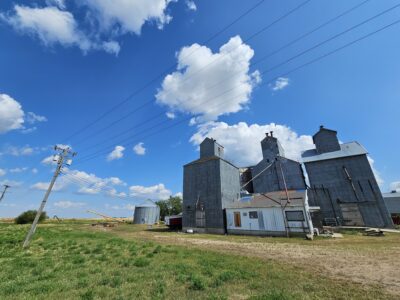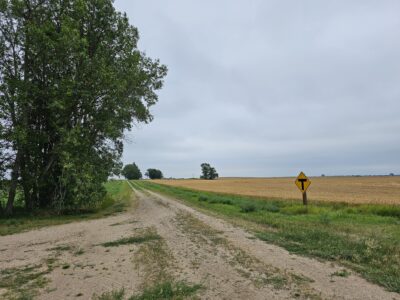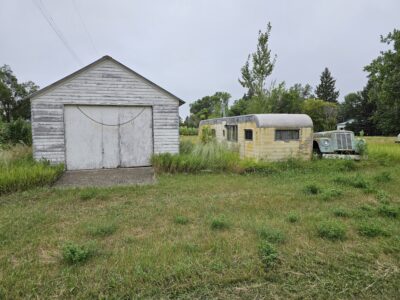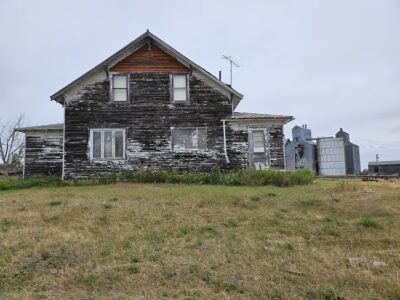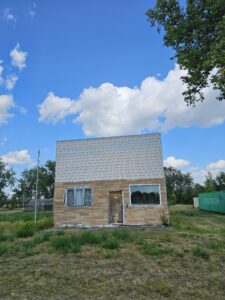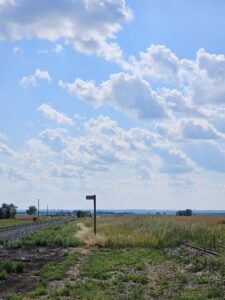McHenry County community worth keeping around
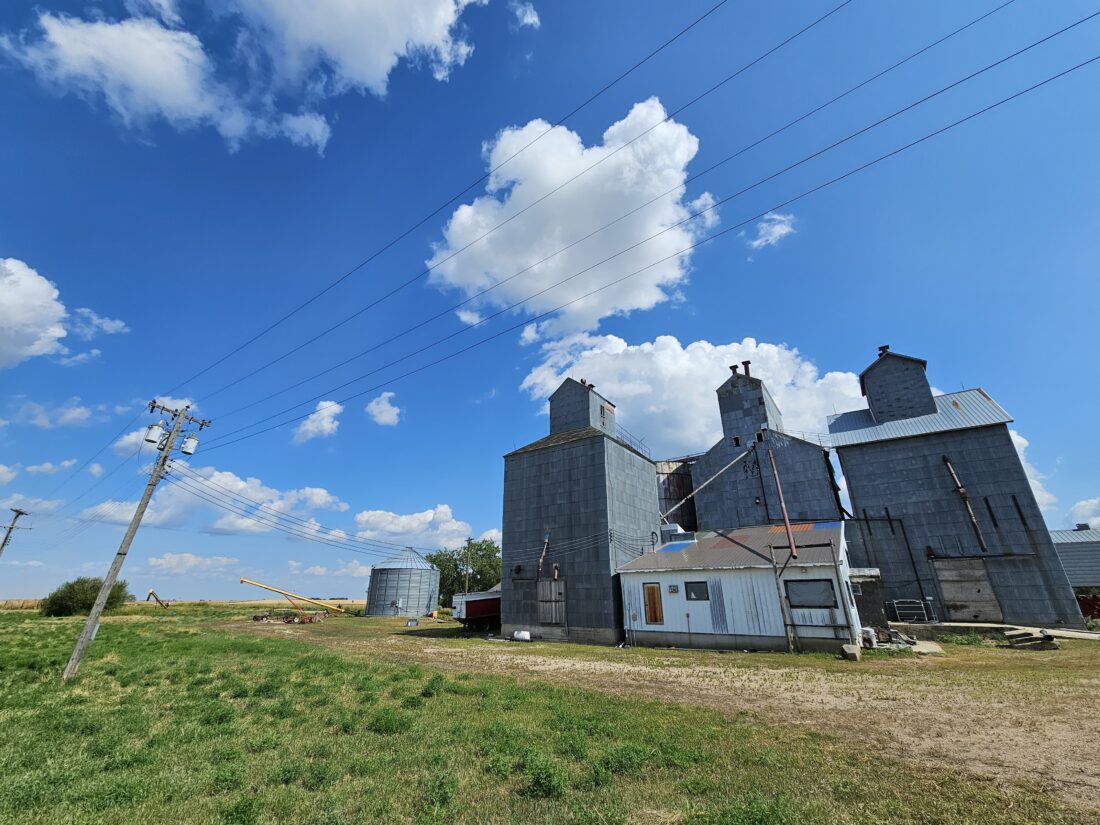
The old grain elevator in Kief is the only visible sign of the town to outsiders and the only one to have not burned down.
Along the southern border of McHenry County lies a tiny city, named for the capital city of Ukrainian homesteaders in 1898. Kief is an echo of what it was but seems to be a special little city.
Hiding in a grove of trees difficult to see for the passerby, Kief sits a short distance down the last right before a dirt road, and there’s only one paved road to the city. One of its streets is named “Addition St.,” bringing to mind an informal vote or perhaps the product of a hasty city expansion.
Kief was originally a service stop for steam trains moving through to refill their water tanks. This put Kief on the map and gave it a bustling economy in its peak in the 1920s.
According to a pamphlet produced during the city’s centennial in 2008, Kief was originally a place for immigrants to escape religious persecution, but it later became a home to the families there. The steam engine was eventually made obsolete and, like water into steam, the city began evaporating.
The passenger train service left the city in the 1940s, according to records, when automobiles became favored and the school closed in 1959. The city was changing from a bustling community to a quiet, peaceful place.
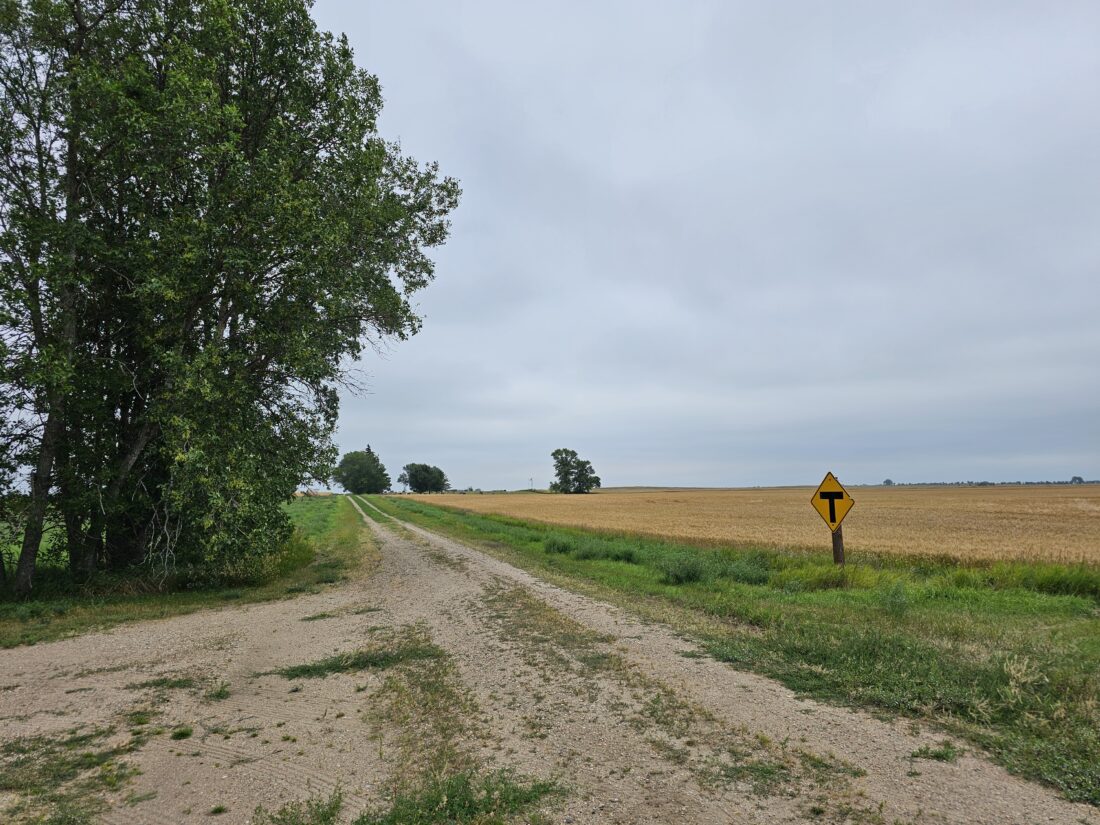
This dirt road takes drivers in and out of Kief.
Allen Johnson, the city’s current mayor, said he’s not sure what lies in its future.
The city, then a village, incorporated in 1908. Kief was named by the first homesteader, Anton Bokovoy, to lay claim to the land and, according to Johnson, Bokovoy intended to name it after his homeland Kyiv, Ukraine. Due to mistranslation when naming the village, its name became Kief, instead of Kyiv.
Far from the most isolated parts of America or even North Dakota, and a short way from Highway 52, Kief is 9 miles from basic necessities. Its last store shut down almost a decade ago. Those who choose to stay in Kief, choose to live a lifestyle of independence from the outside world.
Its not far from neighboring Butte, a town equipped with railroad crossing guards, a small hardware store, a bar and steakhouse, bank, coffee shop, a grade school and a few paved roads. This is the nearest town, which is also off the beaten path, and has a slightly more in-motion feeling.
Kief lacks a main water system. Each of its buildings has its own well and sewage system, according to documents. This lack of a main water system has proven a difficulty in the past with fires. The city has no water tower and has often had to rely on neighboring fire departments in the past to help avert tragedy. Throughout the city’s history, fires have destroyed two different grain elevators, the general store and several other businesses, according to records.
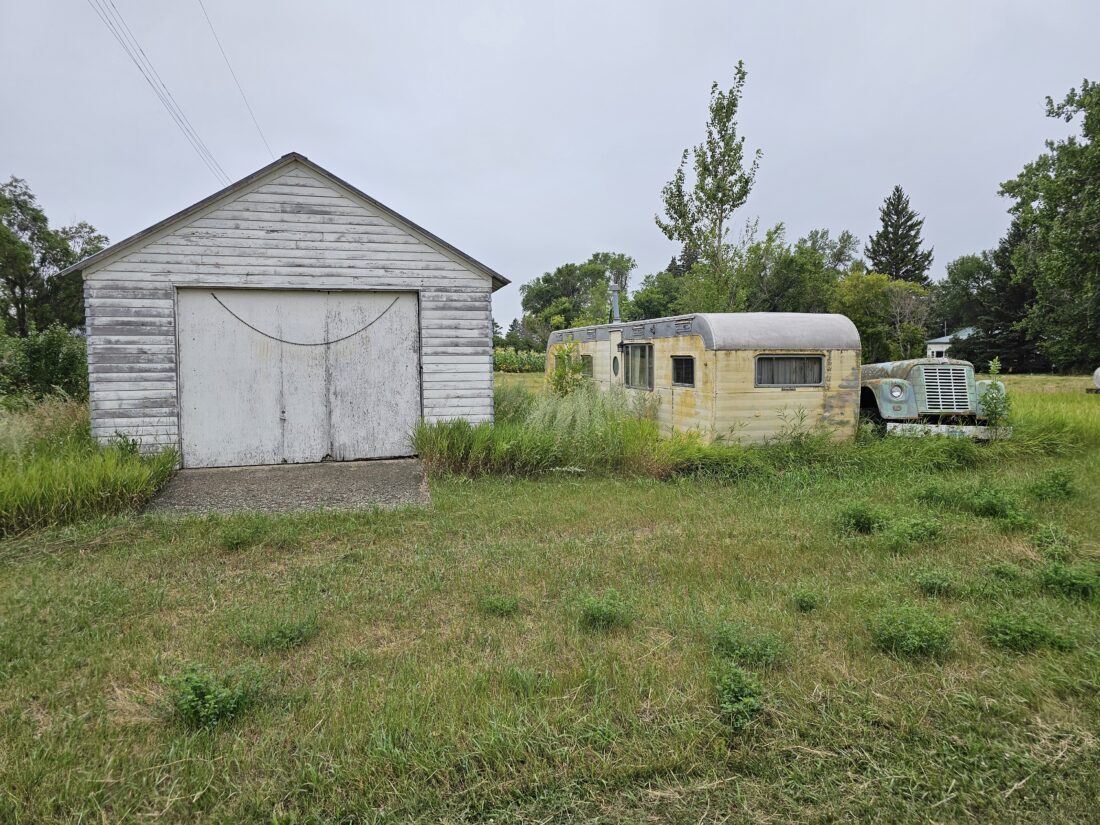
An old camper and truck frame from decades past are next to an old garage in Kief.
Kief was once home to many people and a thriving economy, with many types of businesses one would see in a period movie from the early 1900s. It had a school, bank, lumberyard, drug store, a photographer – when photographs were a novelty – blacksmiths, general stores, barber shop and soda fountain, and even a Chevrolet dealership at one point. The town boomed through the roaring ’20s and began to fade when the economy crashed in the 1930s.
The Kief school was once a large, two-story country school that had a band, glee club, baseball team and other activities for the students in the area to enjoy after school with their friends. According to records, the school had plumbing for flush toilets and showers in the basement, and drinking fountains in the hallways. Most schools in North Dakota at that time had a single room with an outhouse.
The sports teams were usually called the “Kieftains,” according to Johnson, and they played baseball, basketball and, seemingly from photos of the time, had the minimum number of players.
When the last publication about Kief was printed in 2008, there were still three businesses that called it home. Today it has none and though most of its people have moved on, they still reunited for the 100th anniversary celebration in 2008, with Kief still holding a special place in the hearts of some.
Though the city looks like little more than a stand of trees with some small, charming houses sprinkled through it, it has a rich history.
- The old grain elevator in Kief is the only visible sign of the town to outsiders and the only one to have not burned down.
- This dirt road takes drivers in and out of Kief.
- An old camper and truck frame from decades past are next to an old garage in Kief.
- An old farmhouse brings the feeling of stepping back in time in Kief.
- The Kief post office closed in 2001, according to city records.
- The abandoned Soo Line Railroad tracks, right, are next to the Kief city sign and the newer, still in-use tracks.
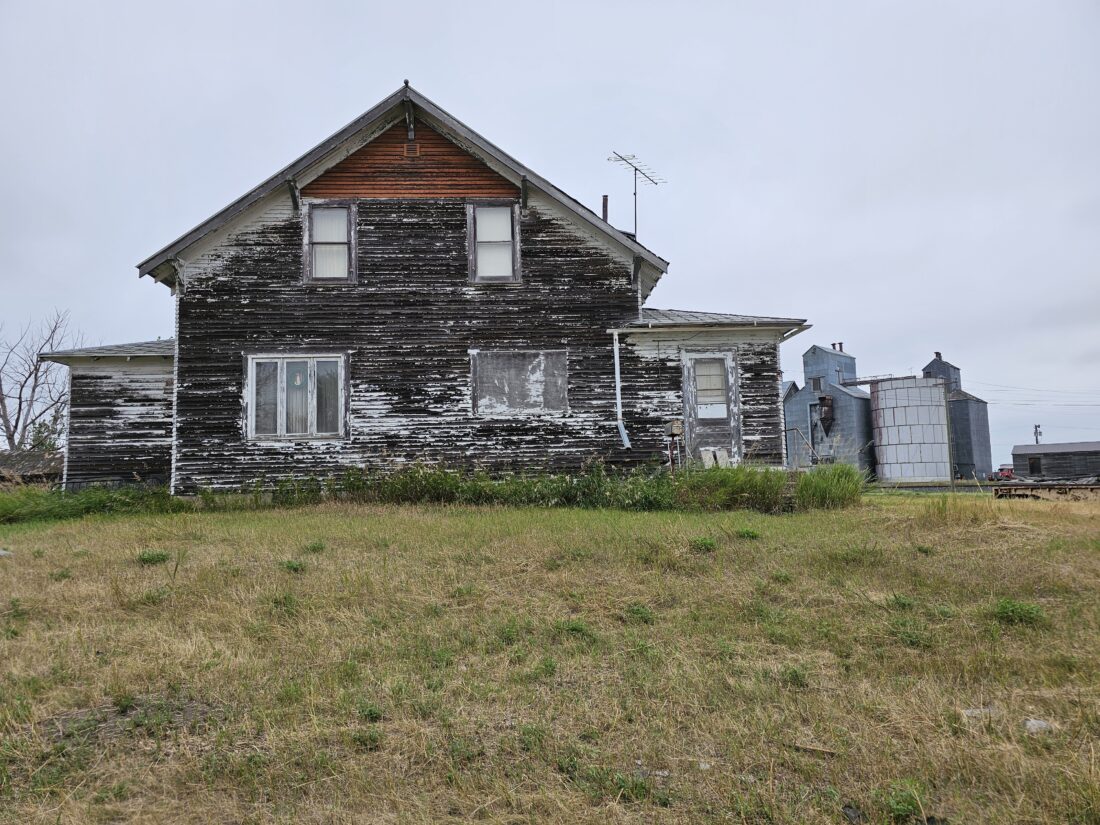
An old farmhouse brings the feeling of stepping back in time in Kief.
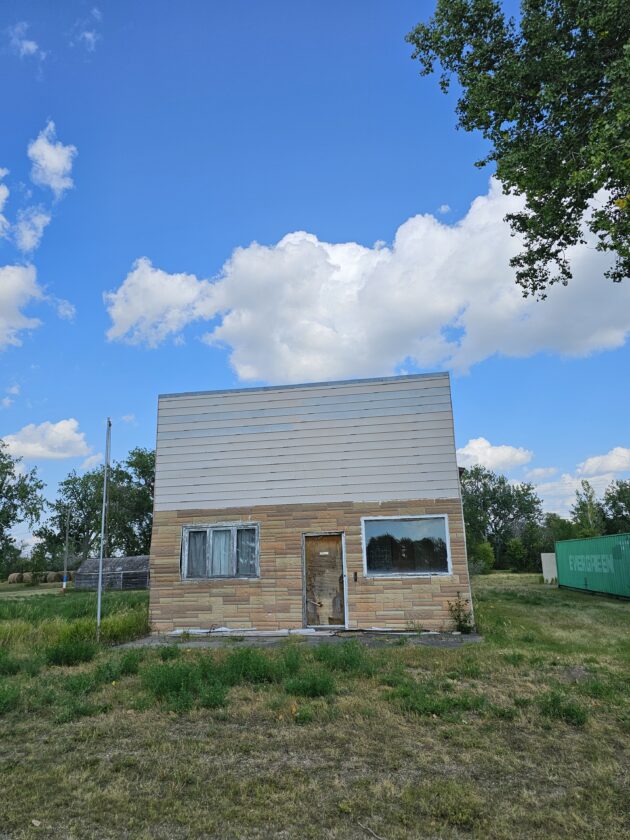
The Kief post office closed in 2001, according to city records.
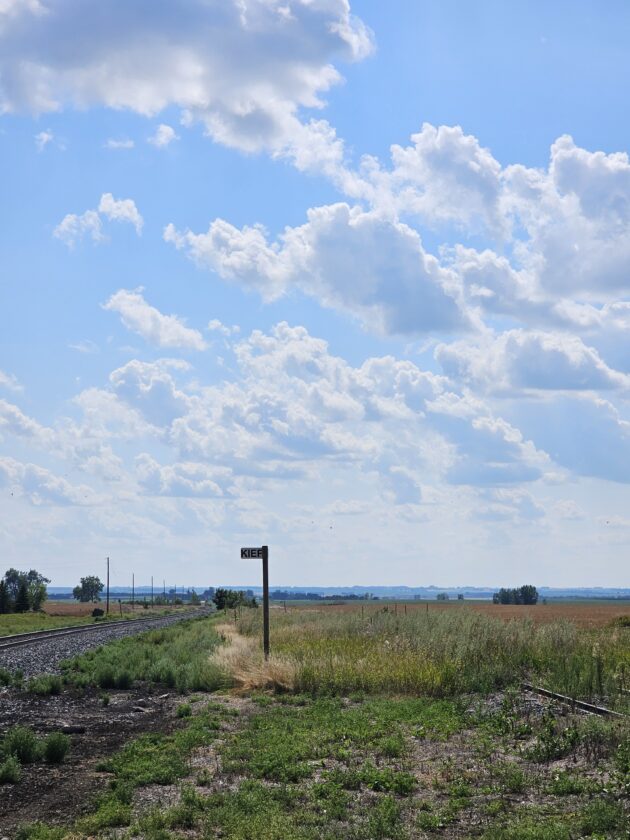
The abandoned Soo Line Railroad tracks, right, are next to the Kief city sign and the newer, still in-use tracks.

